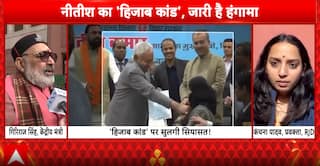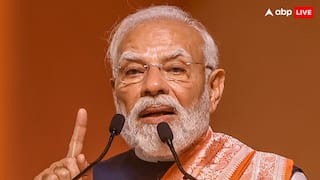Vision 2047: Why Public And Private Sectors Should Team Up As India Sets Development Goals High
As India aspires to become a developed nation by 2047, the Economic Advisory Council to the Prime Minister (EAC-PM) has stressed on more public-private collaboration to stimulate reform activity.

The Covid-19 pandemic has shown how by working together, the public and private sectors in India can effectively collaborate in diagnostics, technology and taking quality healthcare to the last mile. The best example is the development of CoWin, a technology-backed public-private portal for the world's largest Covid vaccination drive.
However, such public-private collaborations have been far and few between.
As India aspires to become a developed nation by 2047, the Economic Advisory Council to the Prime Minister (EAC-PM) in its "Competitiveness Roadmap for India@100" report has stressed on more public-private collaboration to stimulate reform activity and economic growth.
"Effective economic policy design and implementation requires an effective dialogue between the public and the private sector. The private sector has a lot of critical information about concrete barriers that are holding back job creation and growth," says the report, written by noted economist Bibek Debroy and former Niti Aayog CEO Amitabh Kant, among others.
Public-Private Collaborations In Recent Times
However, it is not that India did not have a history of private capital in its infrastructure development.
In the latter half of the 19th century, railway infrastructure was largely set up with capital from the British. Electricity distribution companies in Mumbai, Kolkata and Ahmedabad have existed under private control.
The National Infrastructure Pipeline (NIP) announced by Prime Minister Narendra Modi on August 15, 2020, India's 74th Independence Day, is another public-private collaboration that is expected to boost the economy, generate better employment opportunities, and drive the competitiveness of the Indian economy.
The National Infrastructure Pipeline for the FY 2020-2025 was launched with a projected infrastructure investment of Rs 111 lakh crore to facilitate the implementation of world class infrastructure projects.
The Economic Survey 2021 noted that public-private partnerships (PPP) has helped in addressing the infrastructure gap as well as improve efficiency in infrastructure service delivery.
Over the past decade, the PPP model has seen reasonable success in the country. The setting up of a Public-Private Partnership Appraisal Committee has streamlined appraisals and approvals of projects. It has also brought in greater transparency and competitive bidding processes.
Effective engagement with the private sector on policy design and implementation is visible on specific issues, for example in the sectoral skill councils that drive workforce skill upgrading.
"NASSCOM has been an example of a private sector association that has been able to mobilise a policy agenda that was focused on improving the growth opportunities for an entire sector, not simply the private interests of existing individual members," the report notes.
The report also cites creation of new institutional structures like the Board for Advance Ruling (BAR), the Advance Pricing Agreement (APA) team, and new dispute resolution scheme (DRS) introduced in the Finance Act 2021 as other examples of public-private engagement.
Challenges Facing Public-Private Partnerships
Traditionally, the public and private sector had few incentives to actively collaborate and it was inhibited by a number of often deep-seated challenges.
The India@100 report released last month mentions that within the public sector, there are remains of old anti-business sentiments that existed in the pre-1990 era.
"India needs to resist the temptation of scapegoating of businesses as unpatriotic if their decisions go against the political intentions of the government," the report says.
Secondly, there is a perception among the public that markets are "rigged" with powerful firms. There are also allegations of crony capitalism, where some private business leaders benefit from their close links to political leaders.
"Others see the entrenched interests of the leaders of publicly owned firms that draw on political cover to avoid market competition," the report notes.
Another challenge is the tendency of individual firms or industry associations to pursue their own interest in the interaction with the government, instead of efforts to benefit the competitiveness of a wider sector or the Indian economy overall.
"Within the private sector, there are views about the ingrained inefficiencies and the lack of capability in the public sector that are holding back growth," the EAC-PM report further says.
What Can Be Done To Overcome The Challenges
To overcome these challenges, the report mentions that public sector leadership needs to be willing to look beyond vested interests. On the other hand, the private sector needs to be willing to pursue actions that enhance the overall competitiveness of the economy and not just one sector or company.
The report stresses on the creation of a powerful government agency with the ability to coordinate across policy areas.
"Public-private collaboration has to be sheltered against the pressures of corruption and strive for narrow firm-level benefits vs enhancements of overall competitiveness. The sectoral growth initiatives are an important testing ground for public-private partnerships," the India@100 report says.
While both the public and the private sectors have their advantages and drawbacks, a strategic partnership that can get the best of both parties together can help bridge the divide in job creation, infrastructure development and economic growth.
As Apple founder Steve Jobs once said, "Great things in business are never done by one person; they're done by a team of people."







































